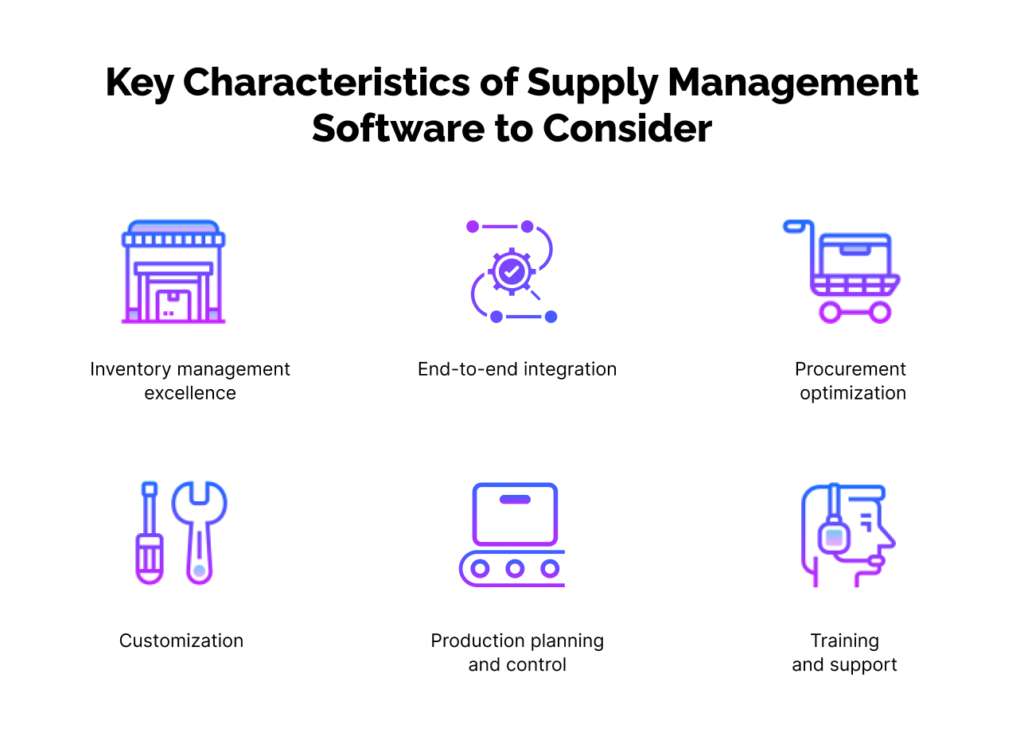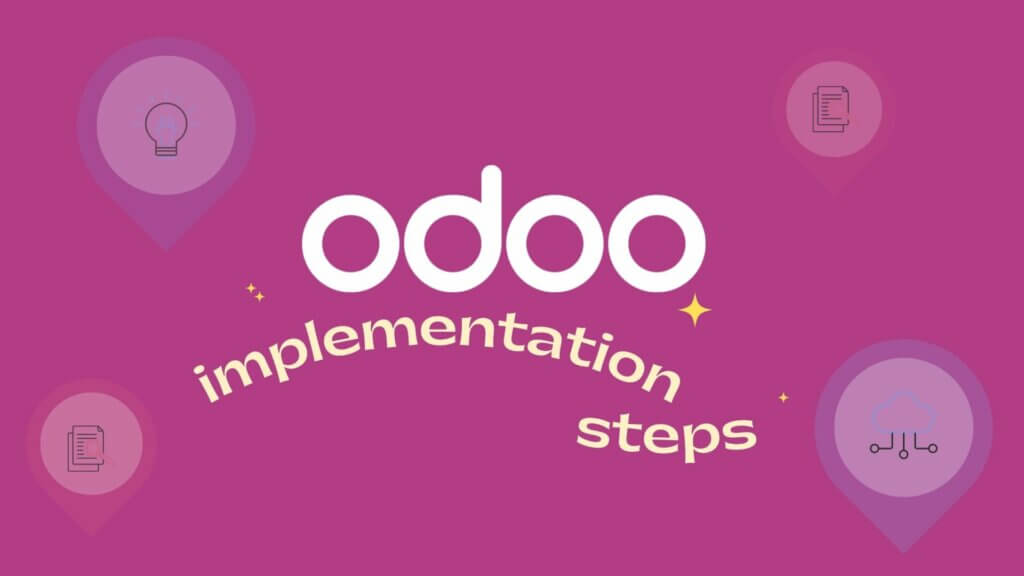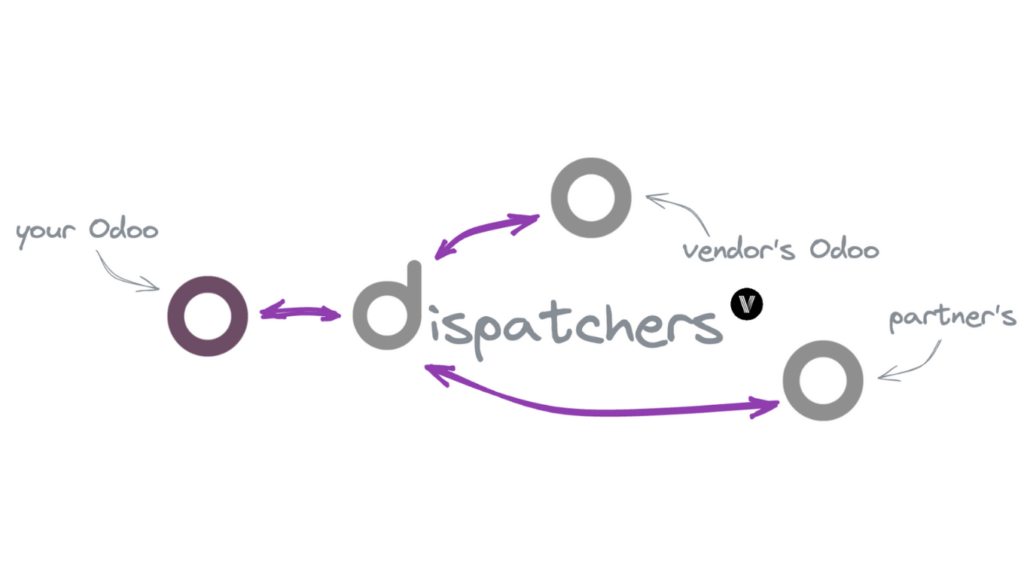The supply chain is a critical component of any commercially oriented business, acting as the network of end-to-end production movement. The quality of supply chain performance is directly tied to business performance. The better it is organized, the more value the business and its customers gain.
In the era of digital business, supply chain management is no longer as challenging as it used to be due to various tools that facilitate and streamline all processes. However, impeccable performance is only possible with the right choice of software to fit the needs and structure of a company and meet the demands of a highly changeable market.
Let’s compare supply chain software and learn the major characteristics from the perspective of mid-sized businesses.
What Is the Best Supply Chain Management Software?
A supply chain is the source of a company’s economic advancement, yet it is also a challenge for managers due to significantly fluctuating factors within the company’s environment.
According to market share, level of recognition, and other characteristics, the three most common solutions for supply chain management are Odoo SCM, SAP SCM, and Oracle SCM. Let’s compare them.

Key Characteristics of Supply Management Software to Consider
End-to-end integration
End-to-end integration refers to a seamless ‘cooperation’ between different applications within one system. It creates an uninterrupted movement of goods to the customers, ensuring that they get the right quality at the right time while minimizing the risk of mistakes. It provides an entire ‘journey’ of a product from supplier to consumer. The moment when the customer places an order, this integration takes place, and the relevant information is automatically sent to other systems. It updates the inventory levels, generates related invoices and reports, and sends shipping notifications without any manual intervention.
End-to-end integration is mainly attributed to the inner network of applications and their cohesive performance.
Odoo SCM, SAP SCM, and Oracle SCM are equally efficient in end-to-end integration tasks. As they belong to modular solutions, they can be integrated with other modules from their ‘families.’ Within the full overview of product movement, these modules create comprehensive end-to-end integration.
Compared to Odoo SCM, however, the Oracle SCM and SAP SCM feature a rather complex nature, which may slow the integration process, thus decreasing the system’s time-to-market.
Inventory management excellence
Inventory management is the core of a properly functioning supply chain, as it ensures stock availability and balance.
- Odoo SCM features the biggest number of inventory management options: real-time inventory tracking, barcode, and RFID support, (multi-) warehouse management, product lot and serial number tracking, automated reordering, inventory valuation, product variants, kitting and assembly, and more.
- SAP SCM features real-time management, warehouse management, demand planning, lot and serial number tracking, consignment inventory, and more.
- Oracle SCM provides supply chain visibility, lot and serial number tracking, consignment inventory, slow-moving and obsolete inventory management, demand forecasting, and more.
While all three supply chain management solutions provide cutting-edge tools for inventory management, their complexity differs.
Odoo, among the three, is relatively easy and fast for development and scaling; SAP and Oracle, however, are labor-intensive and time-consuming, which slows the implementation process.

Procurement optimization
Order procurement is usually handled by the E-commerce or sales modules, yet accurate supply chain management makes procurement more precise and proactive:
- Odoo SCM monitors the inventory levels and ensures the availability of goods, automatic order generation, immediate order processing, landed cost automation, demand forecasting, purchase agreement management, and so on.
- SAP SCM features supplier relationship management, spend analysis, contract management, and supplier collaboration.
- Oracle SCM offers supplier management, strategic sourcing, demand forecasting, procurement analytics, and advanced cloud-based options.
All three programs offer a robust infrastructure for procurement optimization, yet, the complexity and pricing of SAP and Oracle may be a financial challenge for a mid-sized company.
Production planning and control
The precision of production planning is backed up by the relevant data.
Odoo SCM, SAP SCM, and Oracle SCM enable accurate production planning by anticipating the market demand, analyzing the available and required inventory levels, evaluating production capacity, monitoring the production processes, labor usage, production costs, etc. These software systems give a comprehensive overview of a production process, thus allowing for better planning of upcoming production cycles.
Customization
Customization is the core feature of any type of software, including logistics and supply chain management, as it allows users to adjust the software tech characteristics to the tech requirements of the company.
Odoo, SAP, and Oracle are customizable solutions; however, they feature different levels of complexity:
- Odoo features the highest customization level, through Python and XML methods in a relatively easy and quick way.
- SAP features a medium level of customization, through the ABAP (SAP framework) method.
- Oracle also features a medium level of customization through the OAF (Oracle framework) method.
Odoo, SAP, and Oracle supply chain software offer their users customization capabilities. Yet this time, the list is headed by Odoo, due to its high level of customization and relatively low complexity. Odoo is followed by SAP and Oracle, as they feature a lower level of customization, yet a greater complexity.
Need a highly customizable CRM without any hassle?
Training and support
Training and support are always featured in the last stage of supply chain management integration, as it is important to teach the employees relevant skills.
- Odoo is created with user experience in mind. While providing an efficient tech ground for supply chain management, it is easily understandable for workers. Odoo users mention an ‘easy to understand interface,’ ‘visual cues and simplicity of functions,’ ‘uncluttered layout,’ etc.
- SAP features an extensive set of tools and tech support; yet they are often less comprehensible for the users, requiring more training and further support. Users mention ‘outdated design,’ ‘not a user-friendly interface,’ ‘complex functions,’ ‘overloaded dashboard,’ etc.
- Oracle also features a high level of complexity for regular users. Although it has function-rich software, its UI and UX characteristics are rather poor.
Odoo SCM is a relatively simple tool to learn and exploit; thus, users report fewer issues while training.
SAP and Oracle feature a lower-than-average level of user-friendliness due to an overloaded tech experience, outdated designs, and as a result, a need for more training.
Final Thoughts
Supply chain logistics and management are essential for the whole well-being of a company and require the best software for tracking their performance.
Odoo, SAP, and Oracle SCM are highly efficient solutions that belong to a large family of other modules, which together can create a comprehensive overview of business functioning.
- Odoo SCM, like other Odoo solutions, features a vast array of functions to ensure end-to-end supply chain visibility. Compared to other solutions, it features a lower price and a higher level of customization. Moreover, Odoo is more developer- and user-friendly, which speeds up the implementation process.
- SAP SCM is an effective tool for supply chain management, with an extensive choice of functions. SAP features numerous modules, allowing business to track their daily performance. However, SAP is mainly suitable for large enterprises, and its infrastructure is quite complex, which puts extra load on the development process. Moreover, due to high costs, it is unaffordable for small- and mid-sized businesses.
- Oracle SCM offers an out-of-the-box tool for proper supply chain management. Its functionalities establish end-to-end supply chain visibility and tracking options. Oracle is usually a better fit for large enterprises.
While the three solutions are equally efficient in managing the unstoppable performance of a supply chain, the quality-cost comparison brings Odoo SCM to a leading position on the list.
Odoo SCM, and the whole underlying family of modules, offer extensive control over business performance and affordable pricing, thus making it accessible even to small businesses.
SAP SCM and Oracle SCM are highly reputable programs, with a long history of implementation. However, their complexity of development and customization, poor UI and UX design, and high costs degrade their market positions.
Your Supply Chain, Automated
Recommended articles:
- Optimizing Inventory Control with Odoo: Understanding Forecasting Methods
- Ways to Overcome Logistic Problems with Odoo
- How to build picking routes in your warehouse for walking minimization
- How to create a warehouse map and upload it to Odoo
- ERP Mistakes and How to Avoid Them
----------------------------------------------------------------------
Education: Bachelor's degree.
----------------------------------------------------------------------
Experience:
Marketing manager
VentorTech
----------------------------------------------------------------------
Current position: Marketing manager VentorTech
----------------------------------------------------------------------
B2B Marketing
Google Tag Manager and GA
Motion Graphics Production






0 Comments